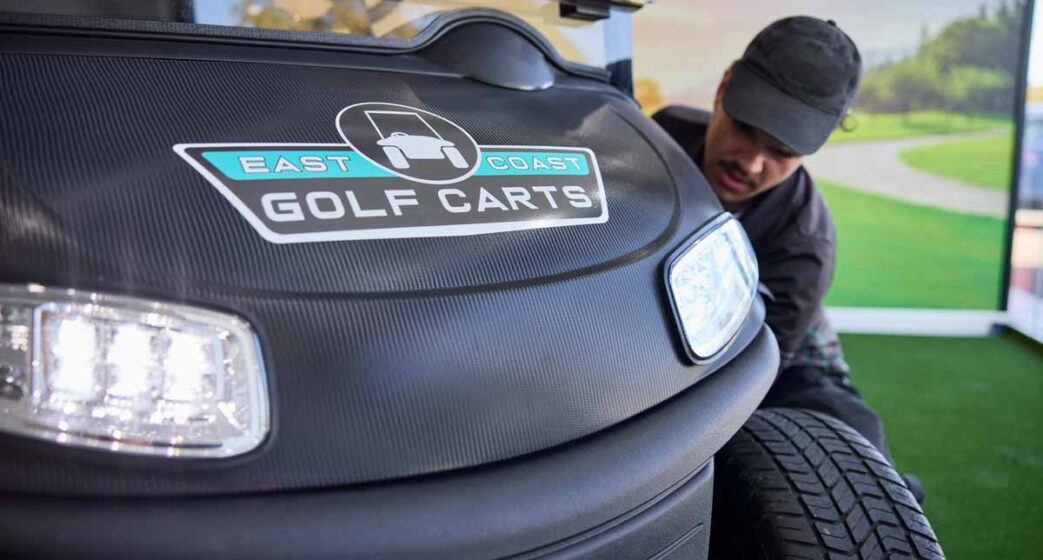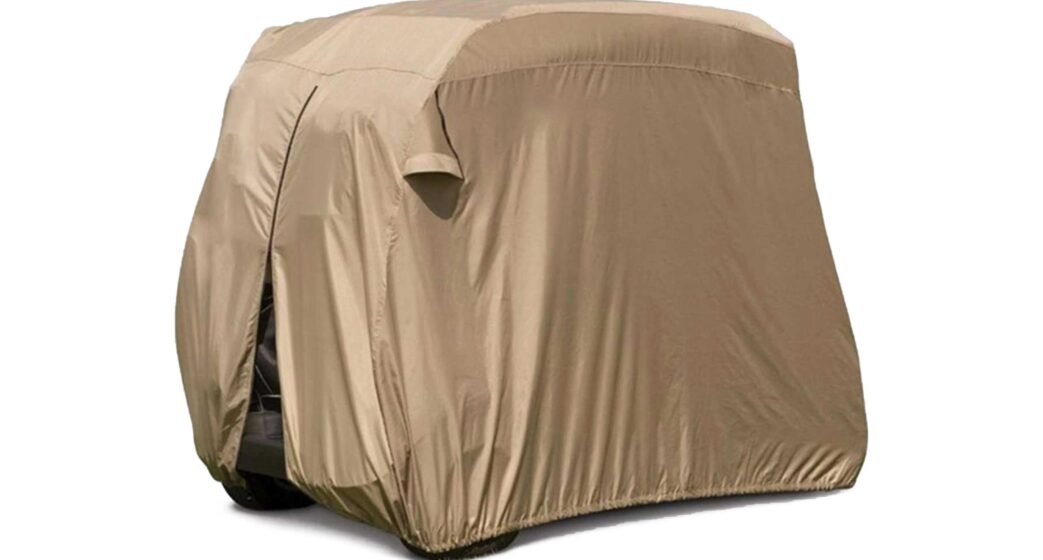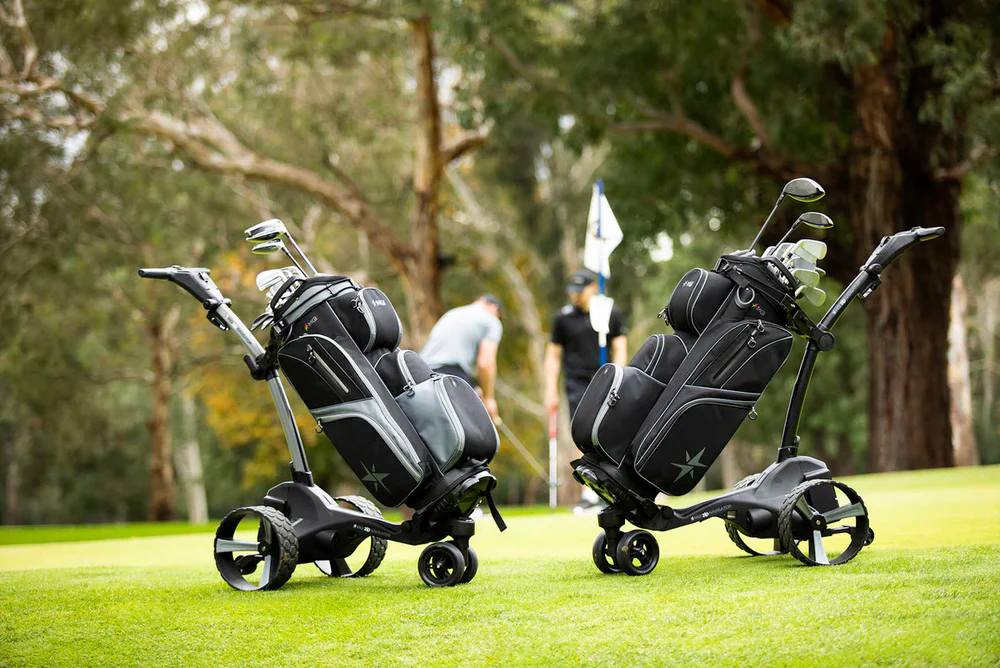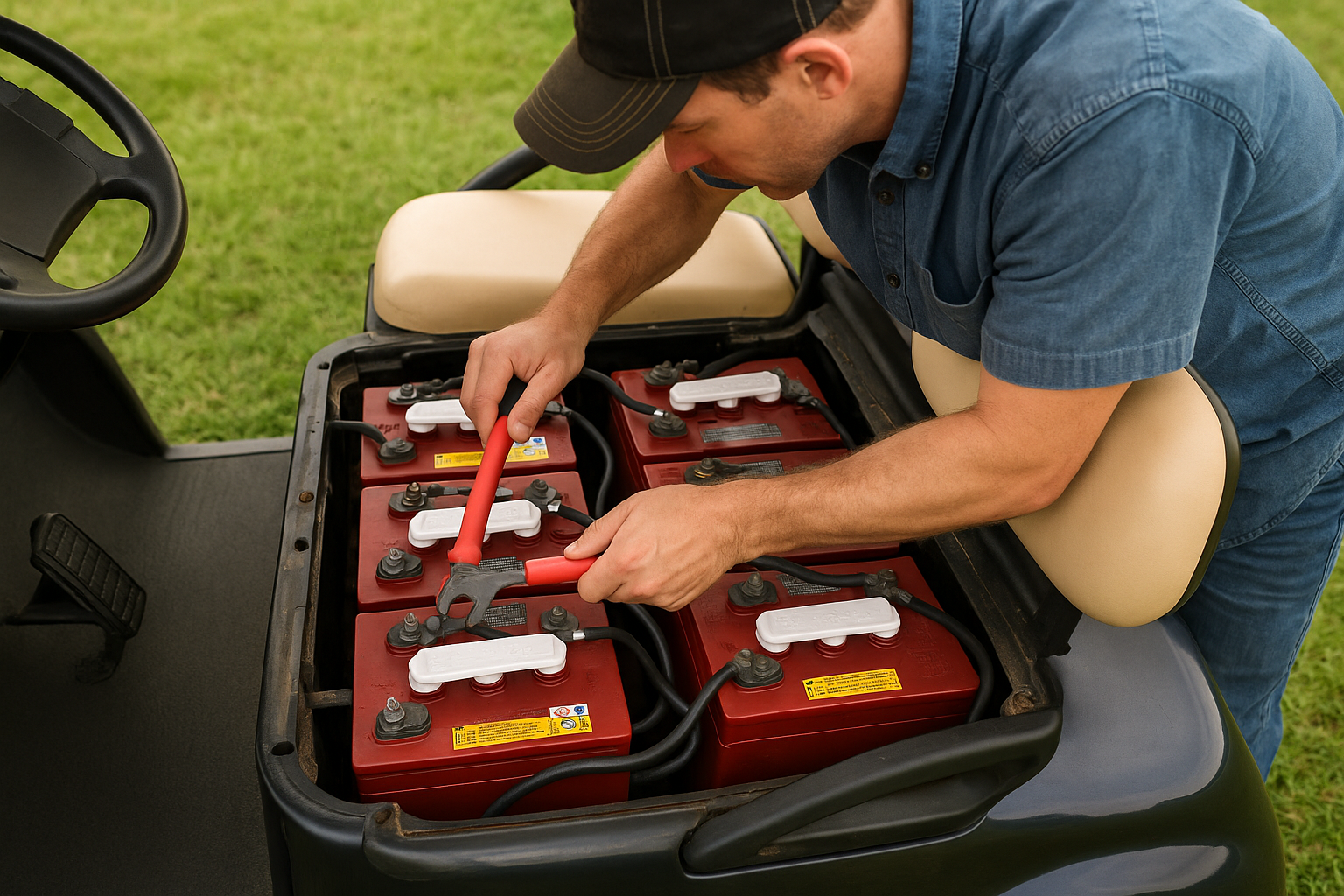Buying a Used Golf Cart? Here’s what to consider

There are a lot of great reasons to purchase a second hand or used golf cart. Budget tends to be an appealing factor. A used golf cart can be a great way to enter into golf cart ownership without breaking the bank. However a money pit could be hidden by an initial purchase discount.
Below is a collection of things to consider when purchasing a used golf cart.
Where to Buy.
Buying from a Dealer - What nobody in the industry wants to tell you is, almost every second hand golf cart from a Dealer is an ex-fleet golf cart. An ex-fleet golf cart isn’t always a bad thing, it really depends on which golf course it’s come from. Some golf courses are harder on their golf carts than others and some have better maintenance schedules than others. If you are buying a golf cart from a Dealer, ask where it came from, ask about maintenance history and what has been done to refurbish it before you take delivery. The reality is, fleet work is often hard on the vehicle. Many golf courses run their golf carts like taxi’s and often they are abused. Bushes, shock absorbers and suspension components usually take the brunt of the hard work and almost certainly need replacing before beginning it’s second life, even if it’s only a few years old. There are a few cases where top level private golf courses take exceptionally good care of their golf carts but this is rare. This is why it’s so important to ask the question about the golf carts history. Golf courses usually lease or rent their golf carts for 3 or 4 years so it’s a 3 or 4 year old golf cart being sold by a dealer, you can be absolutely certain it’s an ex-fleet golf cart. If you are buying from a Dealer, definitely ask about warranty.
Buying Privately – Obviously buying privately can lead to a very good or very bad experience. If you are buying from a first owner that bought it new and know the history, you are probably on to a good thing. This is a rare case where you can get a second hand golf cart that is not an ex-fleet car. In our opinion, you are better off paying a little bit more for a privately owned golf cart if you can confirm with absolute certainty that it is not an ex-fleet golf cart. If the seller doesn’t know much about it’s history, you might want to steer clear of it.
Location – This ones important. Consider local support - If you are buying a golf cart from another region from a Dealer, providing support will prove difficult, even if you have a warranty, regardless of what the dealer tells you, it won’t be easy for them to look after you if they are 100+ kilometres away from you. We always recommend buying locally from a Dealer as close as possible, even a small reseller. These smaller dealers put the time into second hand golf carts and because they are local to the area, they simply cannot risk their reputation. Paying a little bit more from a local dealer is usually worth the extra money and if something goes wrong, you have someone local to call and help you. They'll also be able to do any general servicing or upgrades you want.
How much should you spend?
You get what you pay for. If you are buying a golf cart for a few thousand dollars, don’t expect it to be reliable. A lead-acid battery set is around $2,000, just for batteries. A replacement charger is $500 or more. If you are paying $2,000 for a golf cart, it’s very unlikely to be in good working order. If it’s Electric, you can be almost certain the batteries will need replacing in this price range. Nobody spends $2,000 on batteries a few months before selling the golf cart complete with batteries for the same price as a set of batteries. Buying an older, cheaper model is usually risky and you may spend more than the purchase price keeping it running. Our advice, buy something no older than about 10 years old, preferably less although just remember, almost every 3 or 4 year old golf cart is one that’s just come off a golf course lease. Golf carts, electric in particular, are pretty simple mechanically so buying one that is 5 or 6 years old but privately owned is often going to mean it’s had less use than a 3 year old ex-fleet golf cart.
Our advice is, spend a bit more than the entry level stuff, around $5,000 at a minimum but usually around $7,000 for something of good quality. Spending more on the vehicle up-front will mean spending less maintaining it. It also means that if you want to sell it, you are going to get more money back. If you want a really nice second hand golf cart, around $10,000 will get you a fully re-furbished golf cart with Lithium Batteries. This might sound like a lot of money initially but Lithium batteries are going to last a lot longer than lead-acid batteries and eventually you will save the money.
On a budget?
If you are on a budget, we have some advice you. Buy either a E-Z-GO TXT, Club Car DS or a Yamaha G16, G19 or G22. These are all quality golf carts that are getting a bit long in the tooth now but there is still plenty of support for them. The next most important consideration is batteries – if it’s really cheap and you know it needs batteries immediately or soon, as long as the price is right, it could still be a good option. Replacement batteries will be expensive, consider an upgrade to Lithium. You’ll get a lot longer life out of the vehicle and a huge performance boost from the reduced weight. The older models do have less power than newer models so the Lithium upgrade in these older ones makes a huge difference to the performance. Obviously general condition is important but if you do have to compromise, let it be in the condition of things like the body work, seat or windscreen. Replacement seat covers or windshield are fairly inexpensive, the main thing is that it drives well. What you are looking for when test driving is smooth and quiet acceleration (a small amount of whine from the diff is common and should not be a concern) and seeing whether the vehicle can drive straight without your hands on the wheels. Listen for any unusual noises coming from under the golf cart while it’s moving and gives the brakes a good press (stretched brake cables can mean they are very slow to come to a stop and you don’t want to find this out in the moment you need to stop quickly).
Pickles and Grays Online often auction entire fleets of golf carts at low prices. The results are very much hit and miss. Some people will get a bargain but the over whelming result is horror stories for most people. We do not recommend bidding on golf carts you haven’t seen. Water damage can be severe and a golf cart listed as not running could have a blown controller, corroded wiring harness or damaged motor. The golf cart may look okay but could cost you thousands to fix. Unless you really know what you are doing, leave this to the people that do. A cheap golf cart can turn into a very expensive golf cart if you are replacing components like Controllers, motors, chargers or batteries.
What to avoid:
Even the 3 major brands are not without their less reliable models. A lot of the models mentioned here are not fundamentally bad, they just have weak points and if you can avoid them, do.
Any Club Car with 12V batteries (2004-2008). The 4x12V (48V) batteries in Club Cars, simply didn’t work as well as other 48V configurations. They don’t get the life and you will need to replace batteries more frequently than a Club Car with 6x8v batteries. If you have a 12V Club Car, you might even want to consider upgrading to Lithium Batteries next time you need batteries. Club Cars from around 2005 to 2013 have an OBC (onboard computer) which can be unreliable as well, these aren’t terrible but later models do not have an OBC and are a better choice. Upgrading to Lithium will bypass the OBC, effectively removing it, which is a good thing.
Early model Yamaha G29 (around 2007). These are still a fairly good golf cart but the early models did suffer from problems with the seat base tearing very easily as well as some transaxle problems which can be expensive to fix. If the budget allows, try for something a little bit newer.
Early model EZGO RXV (around 2008). These were the first major golf cart to use an AC drive system rather than DC. This was a huge leap forward in efficiency but it came with it’s fair share of problems. Electrical failures on these models can lead to the golf cart being stuck with the brake on, making it impossible to move. You cannot push the vehicle and the rear wheels will be locked on. They also use 4x12V batteries although because the AC system is more efficient than the Club Car DC’s system, they do tend to last a bit longer.
Types of used carts: Used or Refurbished/Reconditioned
Used carts tend to be listed privately in the same configuration as if it was new. These are the golf carts that were used for a period by an owner without any modifications or upgrades.
Refurbished or reconditioned golf carts are typically sold by dealers and have been inspected, serviced and can have new parts installed prior to listing. There a variety of ways to refurbish a golf cart. Consult with the dealer as to the extent the carts have been refurbished.
Regardless of the type, always ask to see a service history of the cart.
Age
Age isn’t always an indicator of a poor performing cart. Many carts from the 80’s, 90’s and 00’s that we see run great, but there is one caveat. Parts! The older the cart the harder replacement parts are to find. Many manufacturers stop producing replacement parts leading to a reliance on after market parts. This isn’t always a bad thing, but when a replacement can’t be found, we are left relying on ingenuity and creativity.
Apart from parts, typical wear and tear needs to be considered as this might increase service intervals.
Petrol vs. Electric
There are plenty of pro’s and con’s to each. We recommend discussing intentions for use with us when purchasing.
Petrol carts tend to run faster than electric, and with access to a fuel source, they can run all day with little down time. Petrol carts do require more maintenance and servicing which needs to be factored into any decisions.
Electric golf carts do not require as much maintenance however condition and lifespans of golf cart batteries needs to be considered. Additionally, golf cart batteries need access to chargers and require down time to recharge.
Kick the tires
As with cars, give the tires a good once over. Look for even wear patterns, tread depth and any cracking or visible damage. Point these out and discuss the causes to consider potential issues in the future.
Make and model
Brand loyalty and recognition is everywhere including in the golf industry. A reputable and long-standing manufacture is an obvious choice when purchasing second-hand golf carts. Availability of future parts plays a factor here as it does with age.
Damage
Visual inspections for damage or defects on a used cart are easily done. Look for spots of rust, dents, cracks and corrosion. Additionally, look for defects from the sun in paint, vinyl, rubber and plastic. Look for loose panels, bent frames, leaks or sagging which can indicate damage or future issues. Pro Tip: bring a torch. It helps to focus the eye while illuminating a dark area.
Accessories
Golf Cart owners like to personalize and add accessories to their golf carts to increase the enjoyment of ownership. Consider if these accessories suit your needs and review these items as you would the cart.
Value
With everything in consideration, it is time to determine if the golf cart is worth the asking price. Private vs dealer price can differ just as the varying prices can differ on the private market. To build confidence in any choice, take the time to do the research and speak to us about our used golf carts. Finding the answers to current questions might just lead to the ONE question which provides the RIGHT answer to make a purchase.
Need a little more?
Book an inspection with us and bring it in to our full service workshop. Let us look over the cart for you, identifying and discussing any issues we find. We have qualified auto mechanics that specialise is golf carts. Plus, we have seen it all. We know common issues, availability of parts and can help answer lingering questions that might be keeping the deal to go through.
Give us a call today! 02 6652 8816



